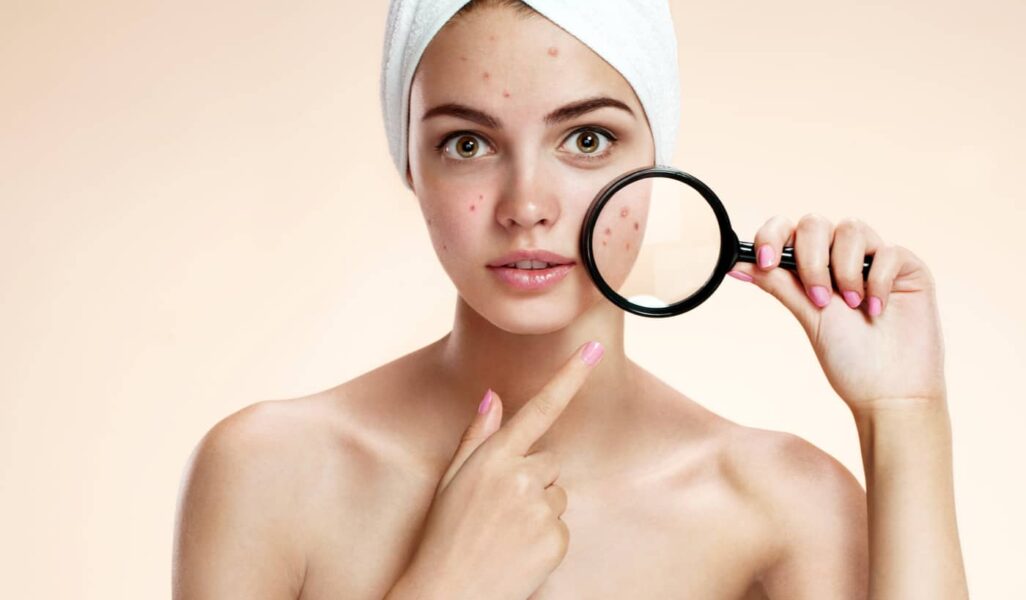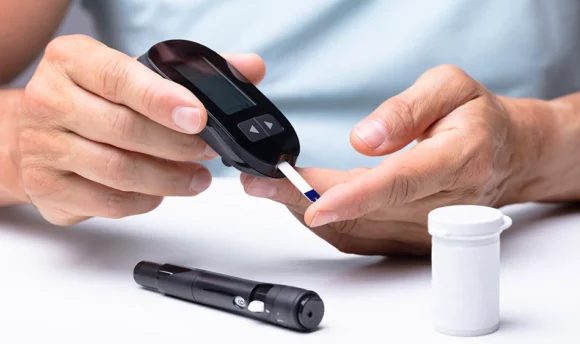What Is Keto Rash? The Condition Explained
Rare symptom of the keto diet who is making you uncomfortable. How to deal with it and what are the first symptoms of keto rash?

Is keto making you itch?
While pretty rare, an upper body rash is a potential symptom of the keto diet – and an uncomfortable one.
It consists of red, bumpy pimples that cause a problematic itch. It can interrupt sleep, athletic performance, and your wardrobe.
It’s known as the keto rash, despite a lack of scientific research into its connection with ketosis. Nevertheless, some keto dieters report it.
If you’re experiencing a body rash in the first few weeks of starting keto, we’re here to give you the low-down on everything you need to know, starting with what it is, possible causes, and how to cure it.
Keto Rash: What Is It?
Keto rash is the common term for prurigo pigmentosa or Nagashima disease.
Prurigo pigmentosa is a rare, inflammatory skin condition. It’s identified by a persistent, itchy rash with red or light pink raised skin lesions that appear primarily on the neck, back, chest, and stomach.
With keto rash, you may also have red spots that leave brown pigmentations in a connective pattern formation.
It’s a type of dermatitis, the generalized name given to a skin reaction caused by irritation from internal or external factors, like food allergies.
Although the precise cause of keto rash is unknown, it’s usually linked with the metabolic state known as ketosis.
Ketosis is a desired state that puts your body into fat-burning mode. Many people use the ketogenic diet (a low-carb, high-fat diet) to activate ketosis, treat medical conditions, or lose weight.
The reduced carbohydrate intake depletes glucose stores that you usually burn for fuel and burns fat instead, making it a prime diet for weight loss.
The keto diet produces several unpleasant side effects, like bad breath, muscle cramps, and brain fog. Keto flu is the term given to a set of symptoms that affect most people as the transition to ketosis begins.
Dehydration and nutrient deficiency are other risks associated with the ketogenic diet.
Most people will experience these things, but keto rash is uncommon.
What Causes Keto Rash?
The exact cause behind keto rash is unclear, as limited research exists.
Some studies have found keto rash in individuals who have high ketone bodies present from keto dieting or intermittent fasting.
It’s possibly caused by inflammation somewhere in the body following the keto diet.
Other potential causes of keto rash include skin friction from clothes and hormonal changes in pregnant and menstruating women. Rashes while on keto might also be caused by chronic stress.
Keto Rash Symptoms
You will soon recognize symptoms of keto rash should you get it.
It’s characterized by skin lesions called papules (small pimples or swelling) that are raised and itchy. Color-wise, the papules can range from light pink to red and brown and form a web-like pattern once the spots begin to clear up.
Keto rash is usually detected on the upper body, including the neck, chest, and upper back, although it also appears on the abdomen.
As with most forms of skin irritation, the keto rash is itchy and uncomfortable. Some describe keto rash as similar to other chronic skin conditions, such as eczema.
A skin rash is usually the result of inflammation or allergic reactions. Certain external factors can worsen skin rashes. For instance, sweating can be a major rash trigger.
How to Get Rid of Keto Rash? 5 Tried-and-Tested Tips
If you find yourself developing a keto rash, it’s helpful to know how to handle the situation.
Fortunately, there are ways of treating keto rash from home. If you’re worried, you can always talk to your doctor for professional medical advice.
Here are 5 ways to treat keto rash.
#1 Bring back carbs
The ketogenic diet centers around reducing your carb consumption drastically. Extreme diet modification triggers ketosis from the lack of carbohydrate intake.
If you believe the keto diet is causing your skin inflammation, you can try reintroducing your carb intake gradually. Eating more carbs will end ketosis, which may naturally resolve keto rashes.
Depending on your health goals, often, a sustainable diet comes down to your individual needs and preferences. If the fully-fledged keto lifestyle is too much, you can try a more liberal low-carb diet and see if the rash reappears.
#2 Prioritize skin health
Healthy skin should be a priority for all.
With keto rashes and other conditions causing skin inflammation, the health of your skin is even more important.
It’s best to wash and keep skin moisturized with non-perfumed, gentle products to avoid irritating the skin further.
If friction causes keto rashes, it’s possible that wearing loose-fitting clothing will prevent it or mitigate the risk of making it worse.
#3 Dissect your diet
You can also take better care of your skin when you address nutritional deficiencies. Many nutrient deficiencies can cause skin problems. For instance, a vitamin D deficiency may trigger dermatologic conditions.
You can get adequate nutrients by including plenty of healthy foods in your diet. Although the keto diet prioritizes fat, it’s essential to take your fat from healthy sources instead of processed and refined foods.
Common keto-friendly foods include:
- Fatty fish and seafood
- Eggs
- Avocados
- Nuts and seeds
- Oils – avocado, coconut, olive
- Full-fat yogurt
- Vegetables low in carbohydrates – broccoli, spinach, Swiss chard, celery, and cucumber
You can also try incorporating anti-inflammatory foods into your keto diet to help combat inflammation. Examples of anti-inflammatory sources to reduce the inflammatory response are:
- Fatty fish, especially salmon
- Green leafy vegetables
- Nuts and seeds – macadamia, walnuts, chia, and flax seeds
- Ginger
- Turmeric
- Berries
#4 Try an elimination diet
An elimination diet is a method used to discover any food allergies that could be upsetting your skin and causing keto rash.
For most keto dieters, the eating plan is quite the transition. The ketogenic diet encourages you to eat lots of fat, which most people aren’t familiar with.
You might be suddenly eating more dairy products, eggs, and seafood.
It’s possible that your rash is the result of food allergens or intolerances, so it’s vital to eliminate them.
The process excludes potential foods from your diet that can trigger allergies and slowly reintroduces them, one at a time to assess your body’s reaction.
Keeping a food diary is a good way to track what you eat and whether it changes or worsens your symptoms.
#5 A trip to the doctors
If you’re unsuccessful in getting your skin health back on track, book a visit to see your doctor for a professional opinion and the potential for medicinal treatment.
Minocycline and doxycycline are antibiotics prescribed to treat skin disorders, including prurigo pigmentosa.
It may be a necessary medication to cure keto rash.
How Long Does Keto Rash Last?
Again, as there is limited research on keto rashes, it’s unclear how long the rash may last.
It likely depends on the individual and whether they seek treatment or practice home remedies. For some, it could be only a temporary rash, while for others, it might take longer to resolve.
If you exit ketosis, it’s expected that prurigo pigmentosa will clear up on its own within a few weeks.
A Word From Nutritionist
Prurigo pigmentosa, or keto rash, is a rash that appears on the upper body.
While current research is not entirely conclusive, it’s believed that the process of ketosis can trigger a keto rash in some people.
It may begin with early lesions and progress to fully developed lesions with liquid-filled cysts. Keto rash is often alleviated when carb intake increases, moving the body out of ketosis.
However, there may be other triggers, such as food allergens and nutrient deficiencies.
Consult your doctor for medical attention to get to the bottom of your keto rash. They may treat keto rash with medications or recommend lifestyle changes to help your skin.
Conclusion
It’s unlikely that you will experience a body rash when you transition to a low-carb diet like the keto diet, as it remains an uncommon side effect.
Should you experience it, the good news is that keto rash is both treatable and preventable. There are several ways to manage the condition, and on most occasions, it will disappear on its own.
As rashes can be worrisome, it’s best to communicate with your doctor or dermatologist.

















































 Select your language:
Select your language: 








